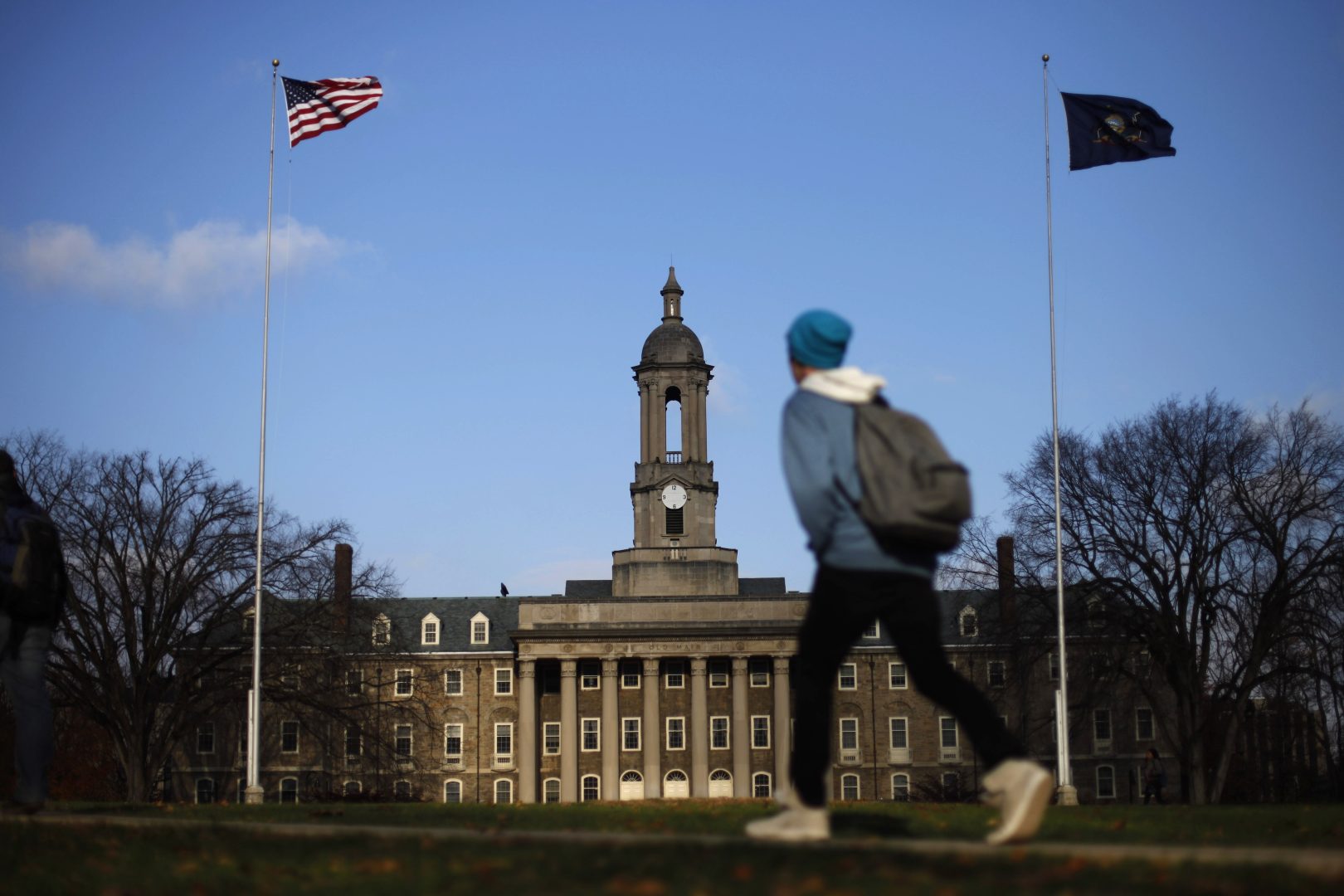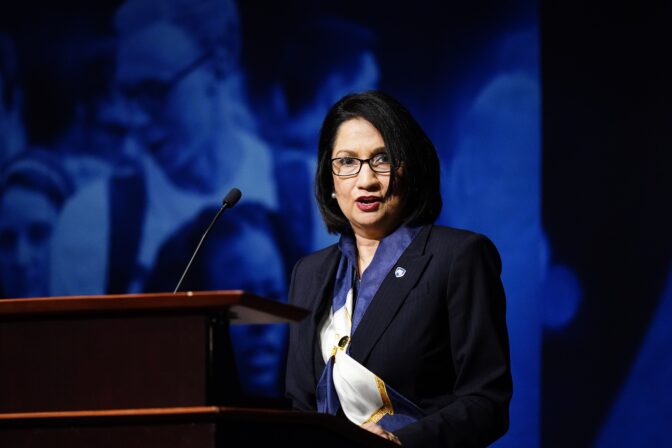
In this Friday, Nov. 11, 2011 file photo, a student walks in front of the Old Main building on the Penn State campus in State College, Pa.
Matt Rourke / AP Photo

In this Friday, Nov. 11, 2011 file photo, a student walks in front of the Old Main building on the Penn State campus in State College, Pa.
Matt Rourke / AP Photo

Matt Rourke / AP Photo
In this Friday, Nov. 11, 2011 file photo, a student walks in front of the Old Main building on the Penn State campus in State College, Pa.
In a change Penn State leaders say will better reflect current student and program needs, the university is moving to a new method for determining how much money its colleges and units will get each year.
Under the new budget model, the amount of money that comes from tuition and state funding and goes to each unit will be based on current data.
Sara Thorndike, senior vice president for finance and business, called the existing incremental model being used “outdated.” She said each unit would get the same amount each year, with small changes. That approach did not make adjustments based on changes in research or enrollment.
She said the new model itself won’t balance the budget, but it will help the university get there by 2025. It comes as the university has been dealing with a budget deficit.
“What the model is going to do in simple terms is take tuition and appropriations and determine how much should get allocated to each of the colleges and to the campuses after we also help fund our other administrative and student-supporting units,” Thorndike said.

Matt Rourke / AP Photo
Neeli Bendapudi speaks during a meeting of the Penn State Board of Trustees, Thursday, Dec. 9, 2021, in State College, Pa.
Thorndike was one of the administrators who answered questions during a webinar Penn State President Neeli Bendapudi held Wednesday morning to explain the new approach.
Bendapudi said no unit will see a cut of more than 4% for each of the next two years.
The new model looks at the “credit hours” of the classes students are taking; the number of students in a college or campus; tuition being paid; and money spent on research. Other changes include developing budgets for the upcoming two years, not just one.
Under this new approach to budgeting, some colleges and units could see the amount of money they get from the university go up. For others, that funding will go down. Money will also be set aside to support classes or programs that have higher costs, serve many students or can’t be accounted for in the budget model.
In the past, the university has made across-the-board cuts to colleges and units. Justin Schwartz, interim executive vice president and provost, said the new method will be data-driven.
“Across-the-board cuts don’t address the evolution and changes in student needs and student demands and student interests,” Schwartz said. “And so we really hadn’t in a long time taken a look at aligning our resources with what the needs of our students really are.”
Penn State has released few details about the model, but said more information will be shared after the holiday break.
The days of journalism’s one-way street of simply producing stories for the public have long been over. Now, it’s time to find better ways to interact with you and ensure we meet your high standards of what a credible media organization should be.